
Make Your RV Fridge Run Better With This Easy Mod
Summer is here and it’s a great time to RV. Everyone’s loving the sun and the heat, but there’s a good chance your RV refrigerator is not. If your fridge is not as cold as usual at this time of year, don’t worry it doesn’t mean it’s broken, it’s just too hot for it to keep up.
With a typical unmodified refrigerator setup, whether in your RV or home, your fridge will only make up so many degrees of difference between the outside air and inside the fridge. Meaning if it’s 85 degrees in your rig, your fridge may only be able to get down to 50 degrees.
Let’s hope it’s cooler than 85 degrees in your rig, but even so, your fridge coil is against the outer wall of your RV, meaning if that wall is hot or in the sun, it’s going to be tough to keep your refrigerator as cold as it should be. Luckily there are a couple of mods you can do that will increase your RV refrigerator’s efficiency.
These simple do-it-yourself modifications will greatly increase the performance of your refrigerator and won’t break the bank. These mods are easy to do and will make your refrigerator run cool and efficient on the hottest summer days. So before taking that vacation to the lake or packing up for a long road trip, make time to do these mods and ensure that you’re keeping your food and beer cold.
Step 1. Accessing the condenser coil
This step is the most challenging of this mod, but if you can find a way to access the back of the fridge the rest of the project will be a breeze. Some RVs will be able to gain access through the vent covers on the outside of the RV or by removing some paneling or cabinetry from inside the RV.
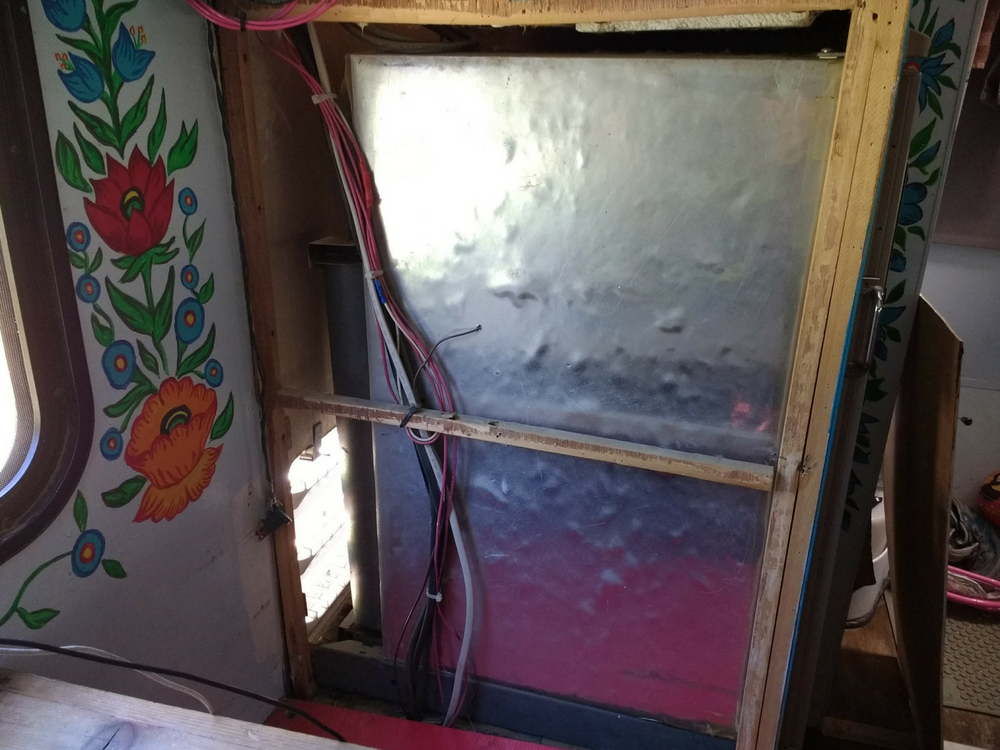
Now that you have gained access to the coil you can start on the installation of the condenser fan and snap disk thermostat to help cool the refrigerator condenser coil.
Step 2. Installing the fan and snap disk thermostat
Now that you can physically see and touch the condenser coil it is time to place your fan so that it blows over a section of the condenser coil.
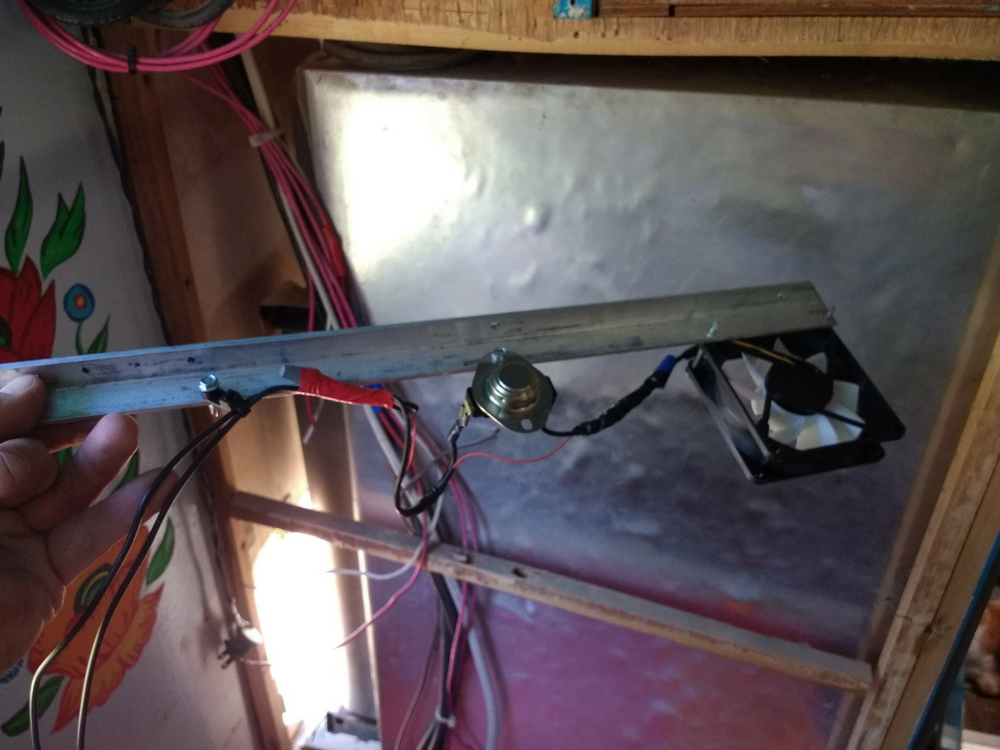
If you buy two properly sized fans you will move more air over a bigger section of the condenser coil which is going to help your refrigerator’s performance even more.
Be sure to place the fan close enough to the coil so that it moves a good amount of air over the coil, the more air the better. I suggest mounting directly on the coil or an inch from the coil at the most.
Mounting the snap disk thermostat will take a little experimentation and trial and error to find the right place to mount. You will need to have the thermostat mounted in a place where it will turn the fan on when the condenser coil area reaches 85 or 90 degrees F and then turns the fan off when it falls below 80 degrees.
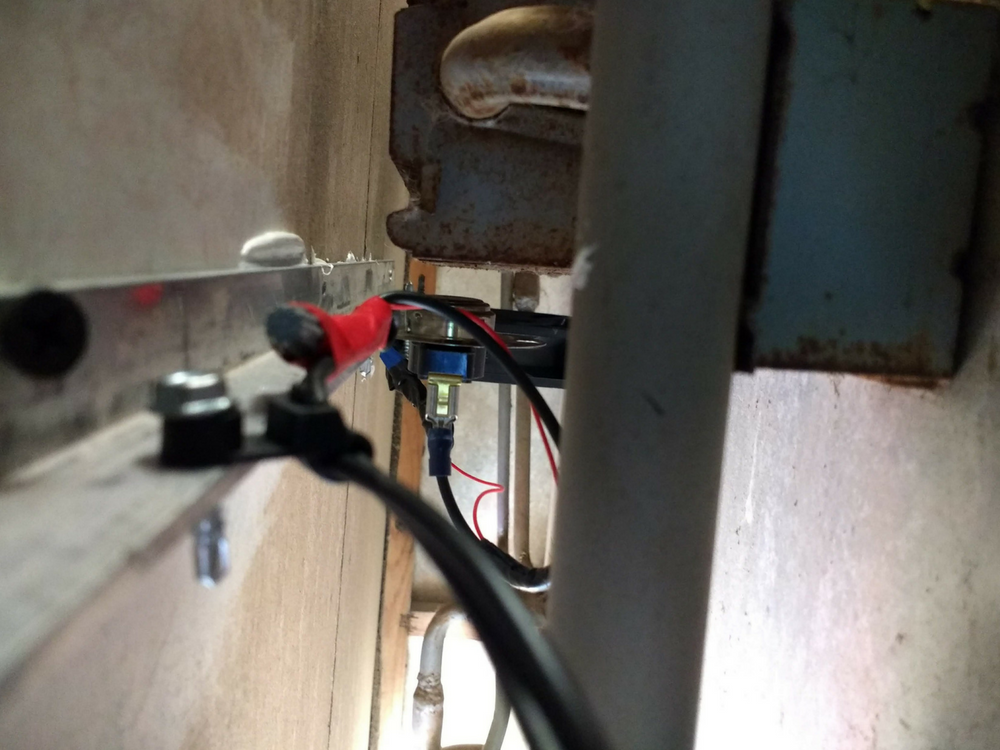
Now that you have mounted the fan and snap disk in the right place, you will have to wire it up with a 12-volt wire supply. With it wired up correctly the fan should now come on when the temperature behind the fridge gets too hot and then turns off when it cools down.
The condenser fan is really only needed to be on during those hot days and nights. Besides, there is no point in running a fan and wasting any unnecessary power when there is no need to.
With everything wired up and operating correctly, it is now time to re-install the outside vent covers or paneling/cabinetry inside the RV. The next step will be to install the fan on the evaporator coil inside the refrigerator.
Step 3. Installing the evaporator fan
Over the years of full-time RVing we have found that the evaporator fan inside your refrigerator needs constant air flow to really get peak performance out of your fridge. If you can’t or don’t want to install a fan on your outside condenser coil that’s okay, but, you will want to install a fan inside your fridge on the evaporator coil.
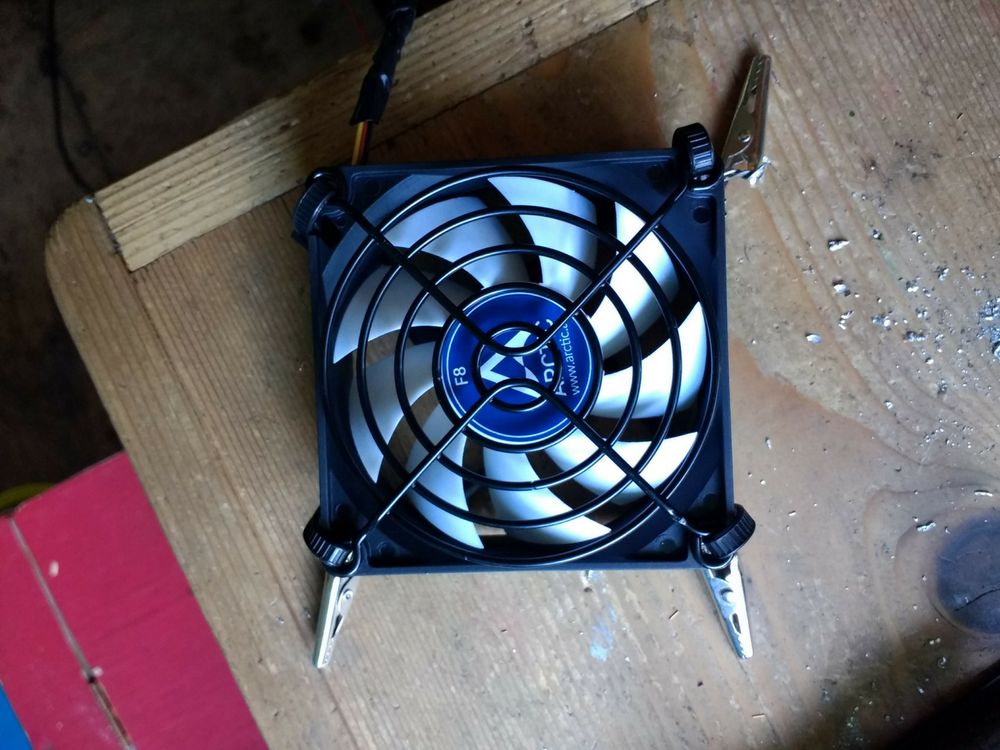
With a fan mounted on the evaporator coil and constantly running, you will notice that the cool air is being distributed more evenly throughout the entire fridge. This will help keep the entire refrigerator cool and help keep produce from spoiling and also keeps those couple of beers buried in the bottom corner of the fridge cold.
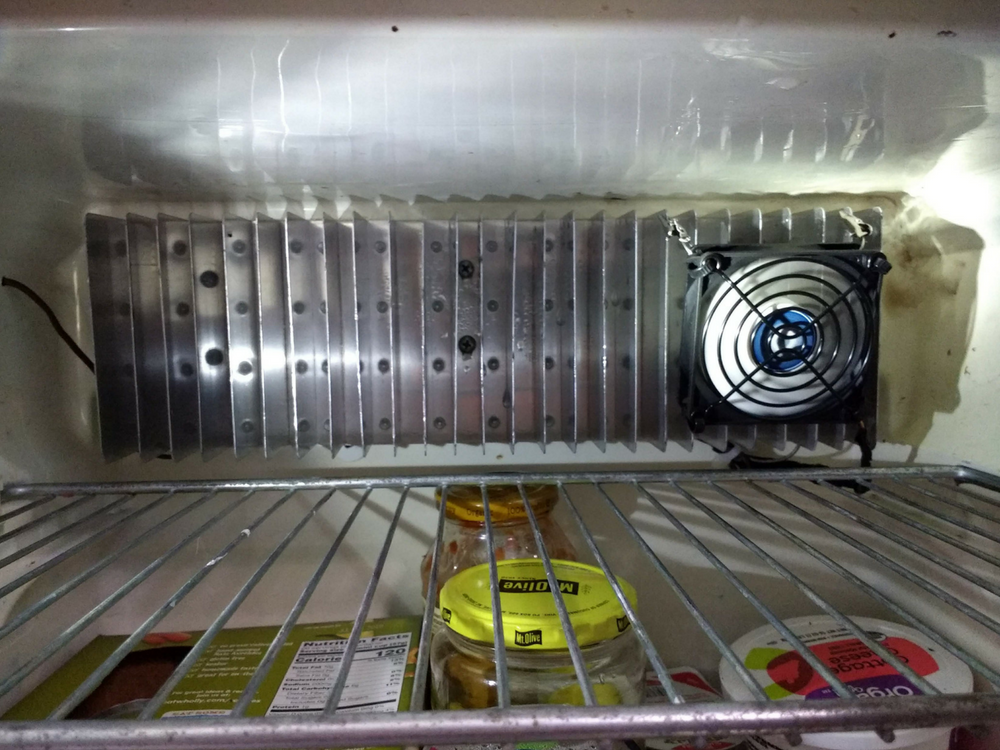
The easiest way to mount a fan to the evaporator coil is to use alligator clips and a grill to protect the fan blade.
Drill a small hole and run a 12-volt power supply into the refrigerator if no power is available. Some 16 gauge low voltage wire or thermostat wire will do the job. Remember, you want this fan to be running 24/7 so wire it accordingly.
With the grill cover and alligator clips installed all you need to do is clip it to the evaporator coil for the installation. I found that the alligator clips hold the fan securely and the grill cover protects the fan blades for all those people out there who overbuy and overpack their fridge. Now just wire it up and confirm proper operation, that’s it.
With the install of these two (or one) fan/s you are going to greatly increase the performance of your RV refrigerator. One of the biggest wastes of money is throwing away food because of spoilage. Do yourself a favor and get these few inexpensive components and devote an afternoon of time to do this modification, you won’t be disappointed. Travel on.

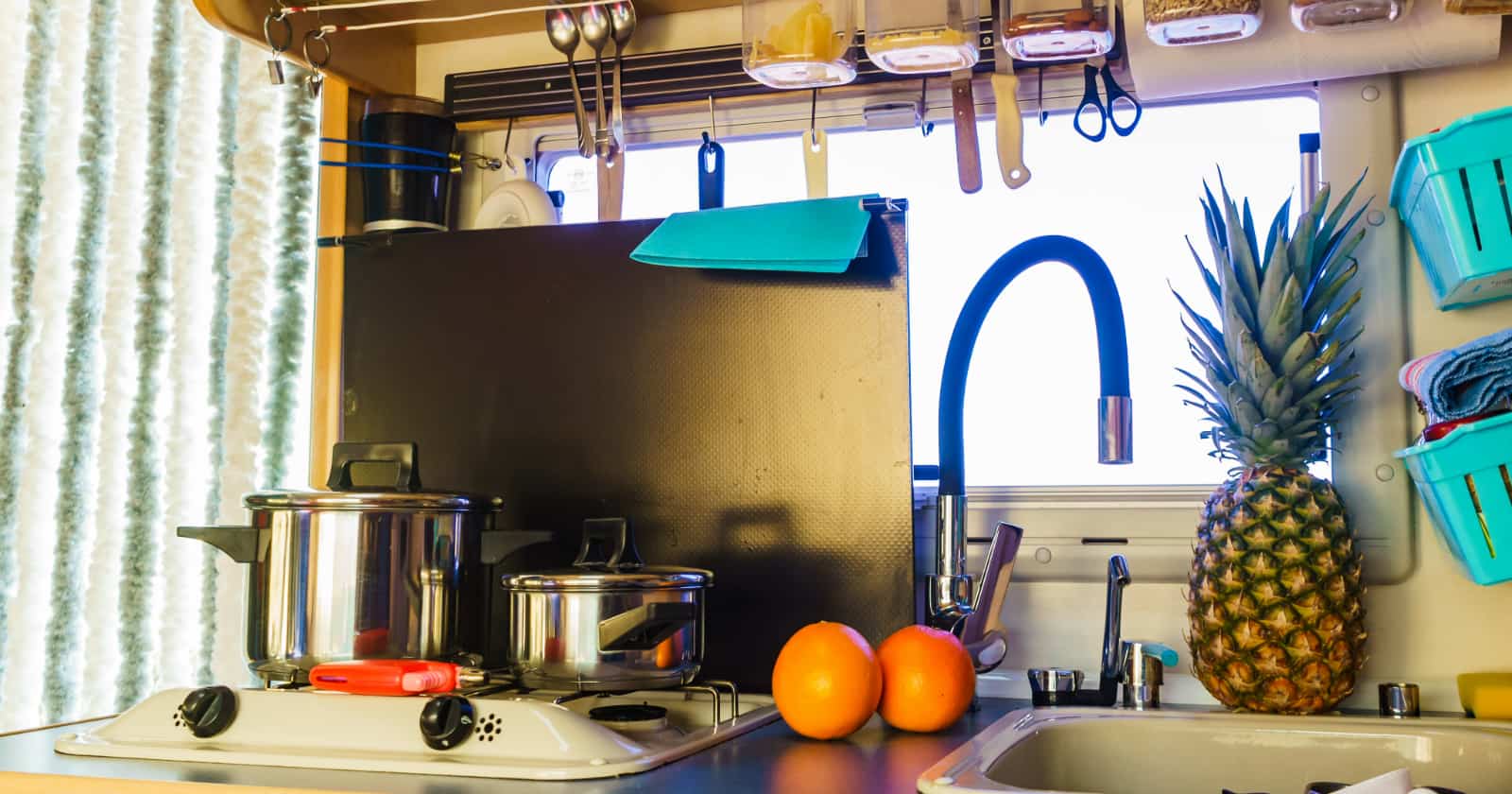

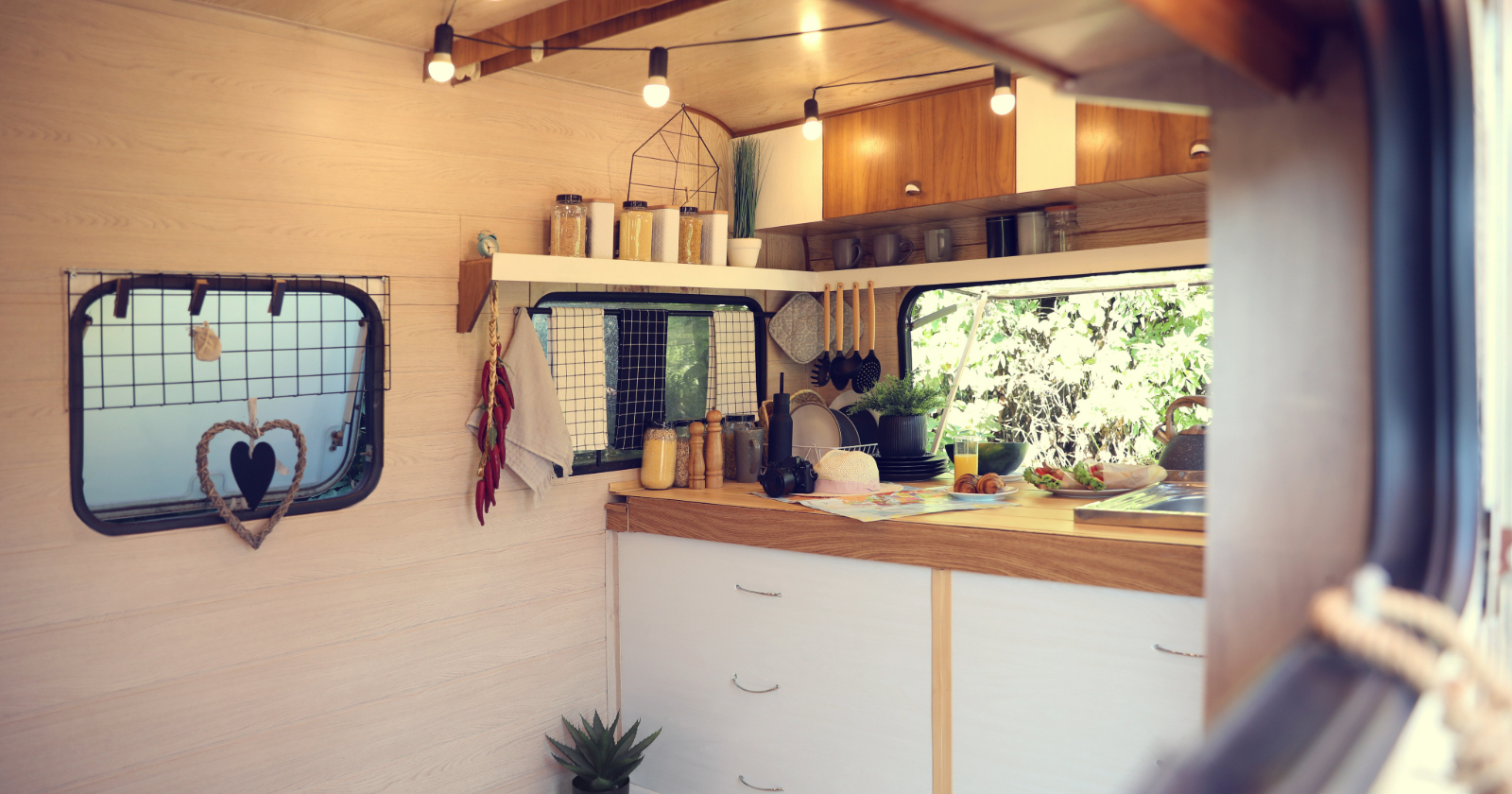
Use a solar powered fan, force air into the base of the fridge. Easy to rig up a portable unit for summer, if it is sunny, its hot and the fan runs, easy peasy
I had an apartment size fridge like that in my old Nomad. I just unplugged it before I left from home, traveled 3 hours, and everything was still cold inside without running power. Worked real well this way for 9 years.
Located on Amazon.ca an Emerson 3F01-110 snap disc fan control. Seems to be within the range .
When connecting into a 12 volt circuit would it be better to go directly to the fuse panel or can I cut into any locally available line in the area. If using an existing power line would it be prudent to put in an in line fuse?
Would like more specifics on the thermostat,such as maker and model. I did a little looking and couldn’t find any that met the temp. range stated in the article. Having just been on a month long trip and fighting to keep frig cold I’m very interested in eliminating that problem.
We found this product two years ago and love it.
It’s essentially a set of fans that moves air over the cooling coils. Easy to install and now for the first time in 18 years our old Dometic stayed really cool and the fins Ice free! Was easy to install..
Used to have to set the temperature on 5, (the coldest setting) and now run on 3 most of time.https://smartrvproducts.com/
And we also have the Camco 42165 Refrigerator Solar Roof Vent System that works pretty well pulling air over the hot coils on the back side of the refer. It’s a good addition to any set up but not in my opinion as a fan or two installed on the back side of the refer to move more air…..
our nevercold 1200 died for the last time at age 16. Recalled twice. Rather than replacing w another for about $3200 we had jc-refridgeration in Shipshewana IN make it into an all electric fridge. Works on inveter, shorepower or genset. we run on inverter while traveling. Works great. Never able to set on “3” and keep it at 0 freezer 32 Fridge until the replacement. Wife happy. Beer cold.
They will send you the parts and a film for Diys or do it at their shop within 4 hrs.